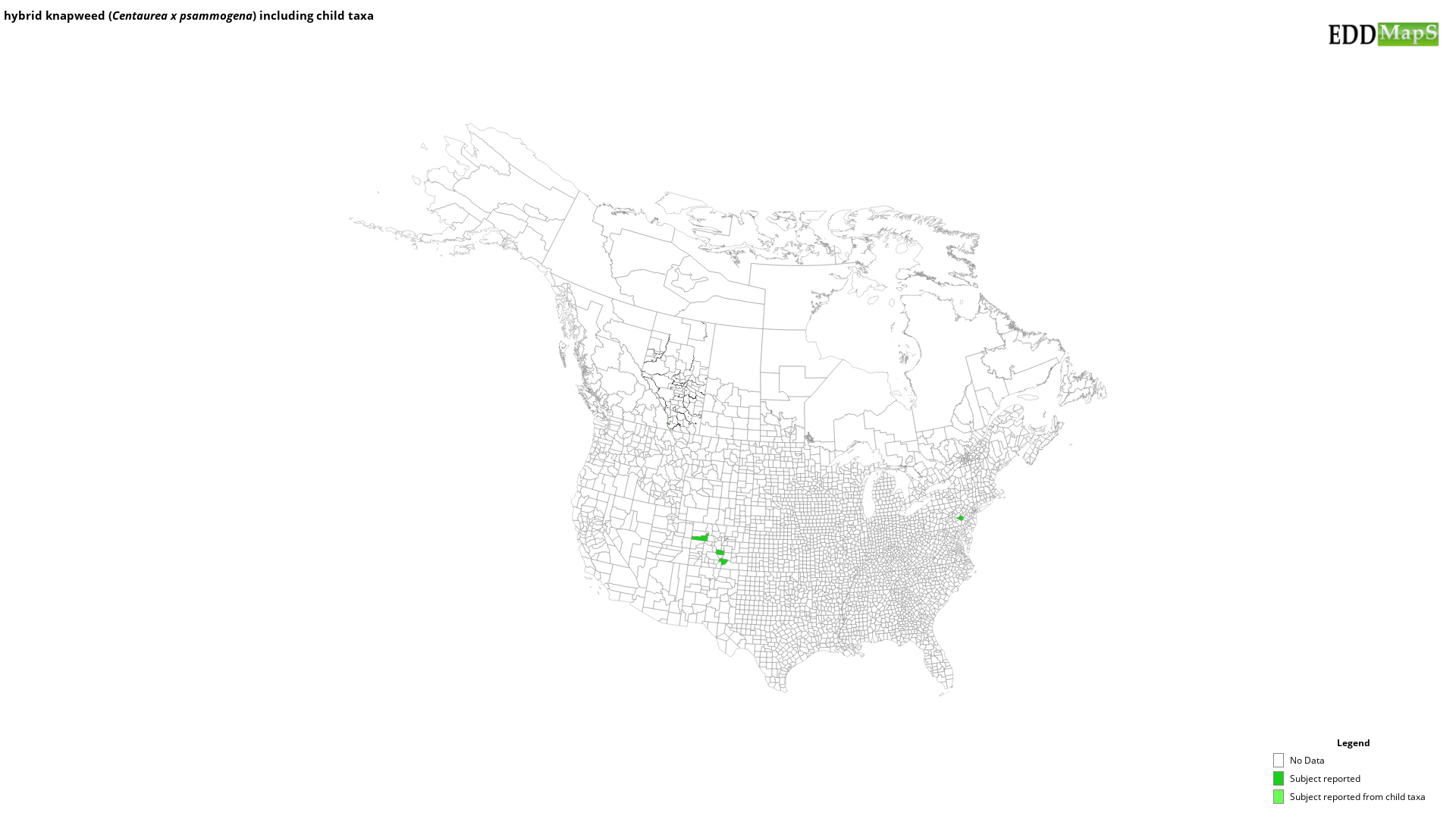hybrid knapweed
(Centaurea x psammogena)
This species is Introduced in the United States
Overview:
Hybrid knapweed is a cross of diffuse (C.diffusa) and spotted (C. stoebe) knapweed. However, among the literature there are various accounts about which sub-species of spotted knapweed was involved, and the taxonomy of spotted knapweed varies around the world as well. There is also disagreement regarding whether the hybridization occurred before import to North America and whether it still occurs among alien, naturalized populations. Centaurea x psammogena was first described in 1909 by Gyula Gáyer.
Like the many other knapweeds, it is a short-lived perennial forb of the Aster family. Its origin is southwestern Europe and method of introduction is speculative. The morphology of hybrid knapweed is extremely variable; it may be intermediate, or may closely resemble one or the other of the parent species.2
Habitat:
Hybrid knapweed grows in sandy, coarse or loamy, well-drained soils, moist but not wet, and generally in full sun.
Identification:
Stems: Stems are single to several, erect, branched in the upper stem, and growing 80-150 cm tall. Stems may be finely hairy.
Leaves: Basal and lower stems leaves are 10-20 cm long and have short petioles. The leaf margins may be deeply lobed or bi-pinnately divided. Leaves decrease in size on upper stem, are sessile (no petioles), and may be simple or lobed. All leaves may be minutely hairy.
Flowers: Flowers are borne singly at the ends of stems and composed of 20-40 florets which may be purple colored (rarely white) or have white central florets with a purple outer ring of florets.1Flower bases are covered with bracts which are brown to black (rarely straw-coloured), and spines may be absent or short.2 Seeds always bear a pappus and radiant heads.2
Prevention:
Hybrid knapweed may be available through the horticultural trade. Other methods of spread would be through seed contaminated soil, or plants being caught in vehicles.
Control:
Grazing: Unknown. Invasive plants should never be considered as forage.
Mechanical: Small infestations may be hand-pulled or dug before seed set, taking to care to remove the entire root.
Chemical: Currently no selective herbicides are registered for use on hybrid knapweed. Always check product labels to ensure the herbicide is registered for use on the target plant in Canada by the Pest Management Regulatory Agency. Always read and follow label directions. Consult your local Agricultural Fieldman or Certified Pesticide Dispenser for more information.
Biological: None researched to date.
References:
1 MacBryde, Bruce. A Baker's Dozen Worst Weeds Invading the Estes Valley. European Hybrid Knapweed. Preliminary Edition 2011.
2 Centaurea diffusa in Flora of North America. www.efloras.org.
Maps
EDDMapS Distribution - This map is incomplete and is based only on current site and county level reports made by experts, herbaria, and literature. For more information, visit www.eddmaps.org
State Lists - This map identifies those states that have this species on their invasive species list or law.
Taxonomic Rank
| Domain: Eukarya |
| Kingdom: Plantae |
| Phylum: Magnoliophyta |
| Class: Magnoliopsida |
| Superorder: Asteranae |
| Order: Asterales |
| Family: Asteraceae |
| Subfamily: Carduoideae |
| Tribe: Cardueae |
| Genus: Centaurea |
| Centaurea x psammogena |


